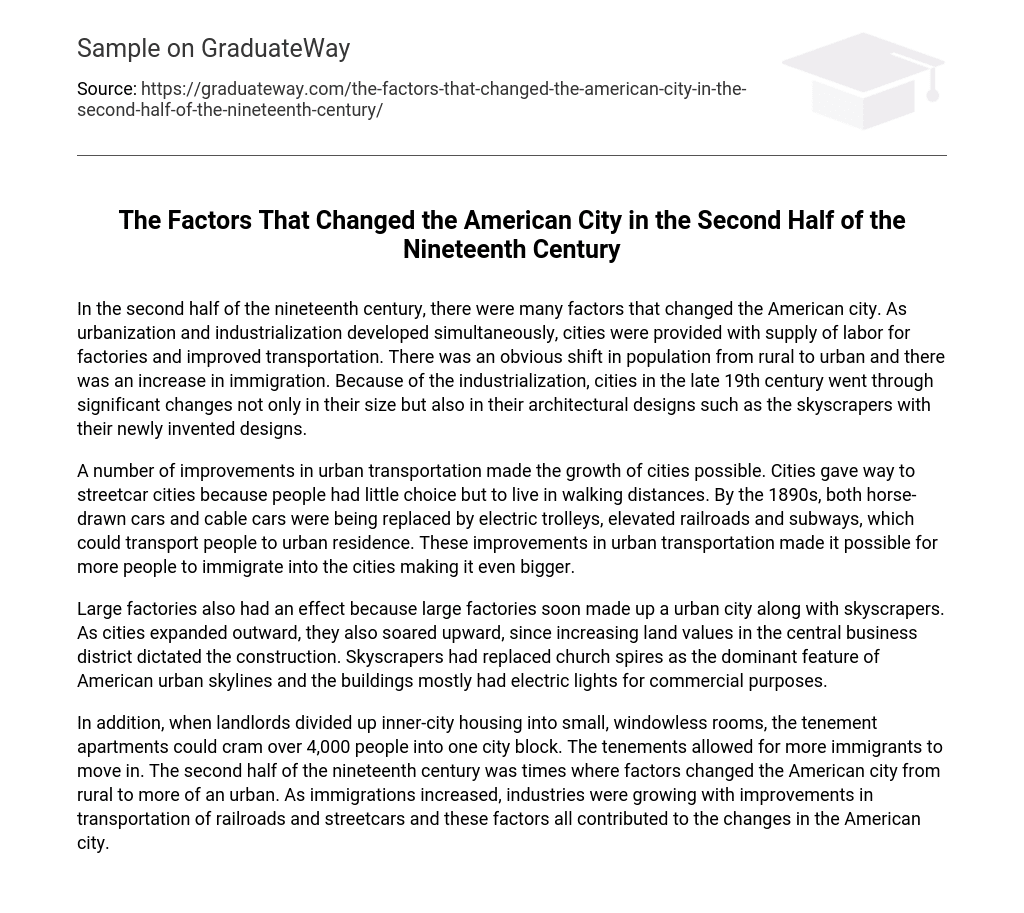During the latter part of the 1800s, American cities experienced major transformations due to multiple factors. The progress of urbanization and industrialization brought about increased factory labor and improved transportation systems, leading to a migration from rural to urban regions as well as a rise in immigration. Furthermore, industrialization had an impact on both the scale and architectural characteristics of cities, giving rise to creative skyscraper designs.
Advancements in urban transportation were crucial for the development of cities. The need to be close to important facilities resulted in the rise of streetcar cities, where people had no choice but to live within a short walking distance. However, starting from the 1890s, horse-drawn and cable cars were being replaced by electric trolleys, elevated railroads, and subways as means of transport in urban areas. These improvements in transportation made commuting more convenient and ultimately attracted more people to move to cities, thus supporting their growth and increasing their population.
Urban cities experienced a notable impact from large factories, which played a role in the rise of skyscrapers. The growth of cities, driven by increasing land value in the central business district, led to taller and larger urban areas where skyscrapers emerged as the prominent feature in American city skylines, surpassing church spires. Additionally, these buildings were primarily equipped with electric lights for commercial use.
The tenement apartments facilitated the influx of immigrants by dividing inner-city housing into small, windowless rooms. Up to 4,000 individuals could be accommodated within a single city block occupied by these tenements. Consequently, this brought about transformations in the American city during the latter half of the nineteenth century due to factors such as heightened immigration rates and advancements in transportation (specifically railroads and streetcars), all contributing to the transition from a rural to an increasingly urbanized setting.





